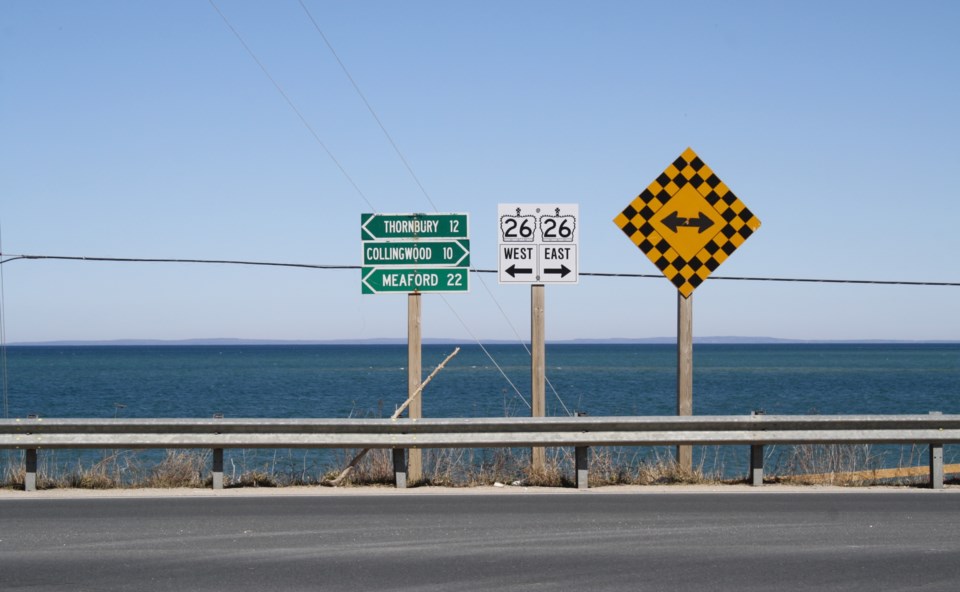Grey County’s public transportation pilot is set to launch this September.
“This will secure transit running up and down Highway 10 and 26 and Highway 6 with a potential option for Grey Road 4,” said Stephanie Stewart, director of community transportation for Grey County.
The county began pursuing a public transportation project last year after receiving a $1.9 million grant through the Ontario Community Transportation Program.
Earlier this year, the Grey Transit Route (GTR) project was put on hold because of COVID-19 concerns, as well as a looming grant-related deadline.
However, at a recently held committee of the whole meeting, Stewart reported the Ministry of Transportation has granted the county a six-month extension, allowing the project to move forward.
As such, county council has directed staff to enter an agreement with Driverseat Inc, a franchise company based out of Owen Sound.
The agreement will see three routes phased-in beginning in September.
Driverseat Inc. will be providing six, 10-passenger vehicles, transit operators and an electronic fare payment system.
Route one will operate along Highway 26 from Owen Sound to the Town of the Blue Mountains (TBM), twice daily, Wednesday to Sunday.
Route two will operate on Highway 10 from Owen Sound to Orangeville, twice daily, Monday to Friday.
Route three will connect Highway 6 from Owen Sound to Wiarton, twice daily, Tuesday to Thursday.
The county will also be pursuing a fourth route later in the fall once all the other routes have been established. The fourth route will run on Grey Road 4, connecting Flesherton, Durham, Hanover, and Walkerton.
Although supportive of the project, TBM Mayor Alar Soever says he is concerned that the pilot will not be able to test the real demand of the system because of the limited capacity of the 10-person vehicles.
“This is supposed to be a pilot to see what kind of demand there will be but I think we are pretty limited here in terms of size,” Soever said.
According to Soever, a pilot will only work if it has the capacity in the schedule to meet people’s needs.
“We have had some experience with transportation projects with the project that we run with Collingwood and Wasaga Beach, which brings people to [Blue Mountain] Village from those communities,” he said.
“When the schedule was limited and the capacity was small, people didn’t use it. Once we upped the schedule so it became more practical for people, then all of a sudden ridership went up,” Soever said.
According to Kim Wingrove, CAO for Grey County, the initial transit routes and frequency were developed to stay within the financial parameters of the grant funding and may be expanded in the future.
“If we recognize that there is more demand, we can work with the provider and put together the business case so that the council is aware of that cost-benefit analysis and what further investment may be required,” added Wingrove.
Numerous stakeholders and lower-tier municipalities were consulted in the process of selecting transit routes, but Stewart says perfecting the routes to be what the public wants will be a “work in progress”.
“Not everything will be perfect and not everyone will be able to get where they want to go at the very beginning,” she said. “But, we will continue to learn and develop as we go along.”
Stewart says she is also in discussions with Simcoe and Bruce County to see how public transportation could be improved to allow residents more seamless access across the South Georgian Bay area.
“One thing we are doing is when our bus arrives at the Blue Mountain Village, it does align with the bus that will go to Collingwood and also the Simcoe Linx, so that riders can go on to Wasaga or Barrie and carry on,” Stewart added.
The estimated cost for Driverseat Inc. to operate the proposed service from Sept. 1 to Dec. 31 is an estimated $213,911.
The county has outlined plans to run the pilot project until 2022.


